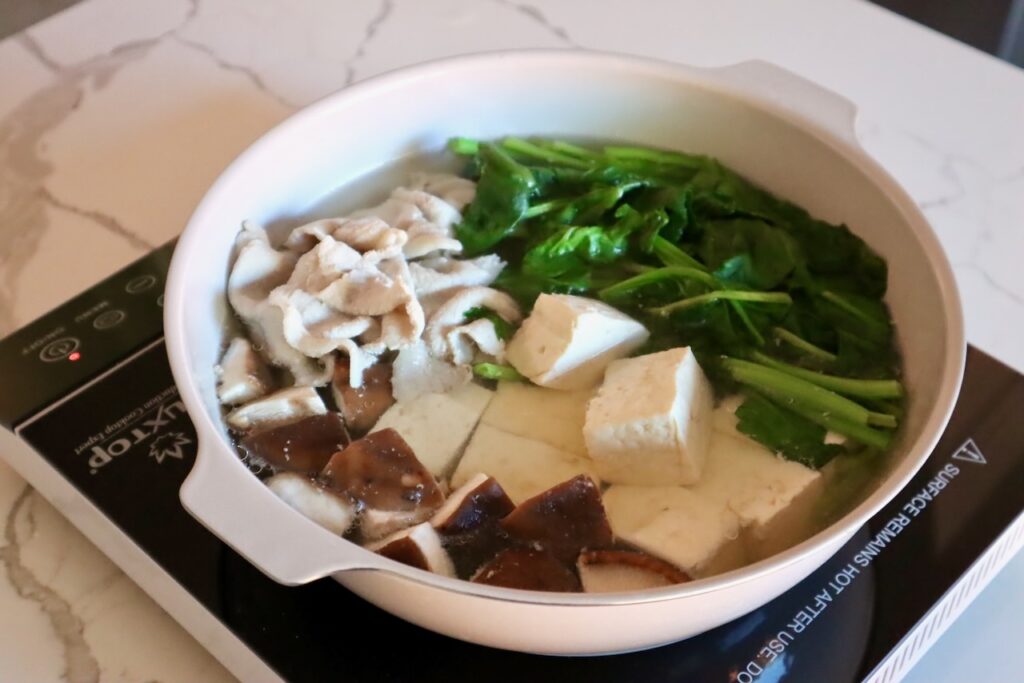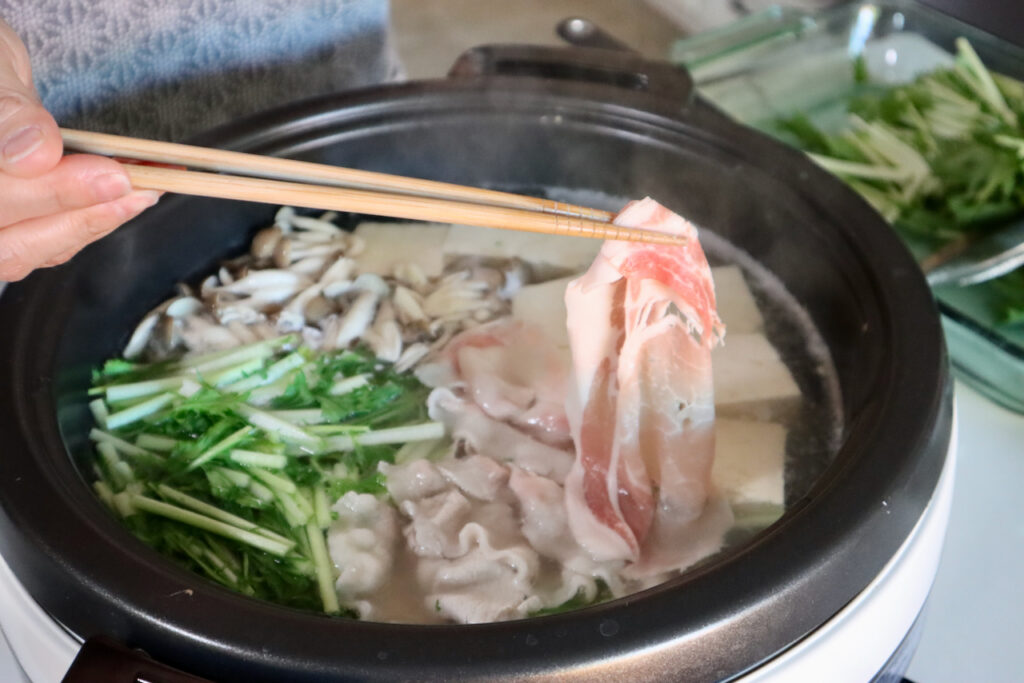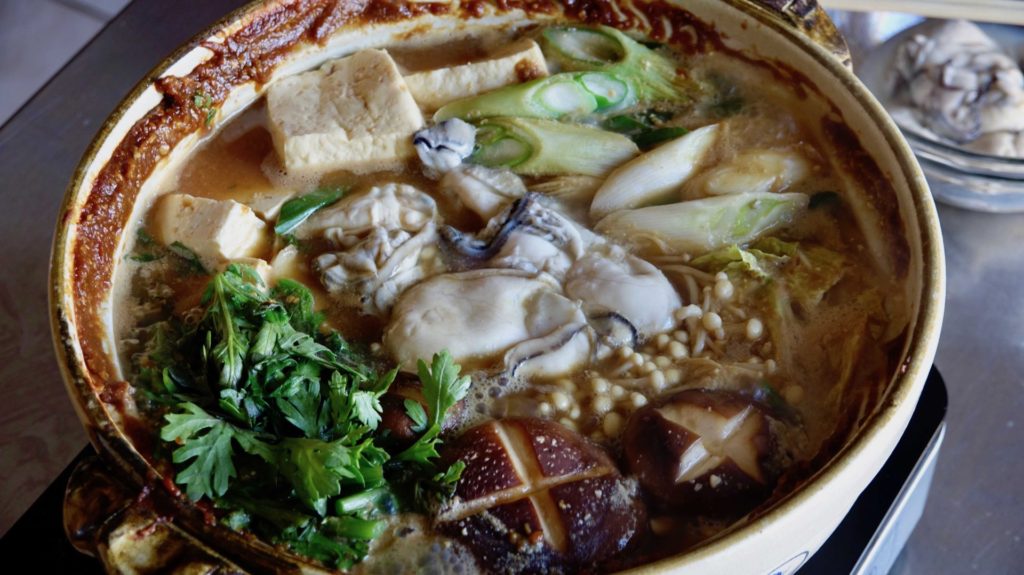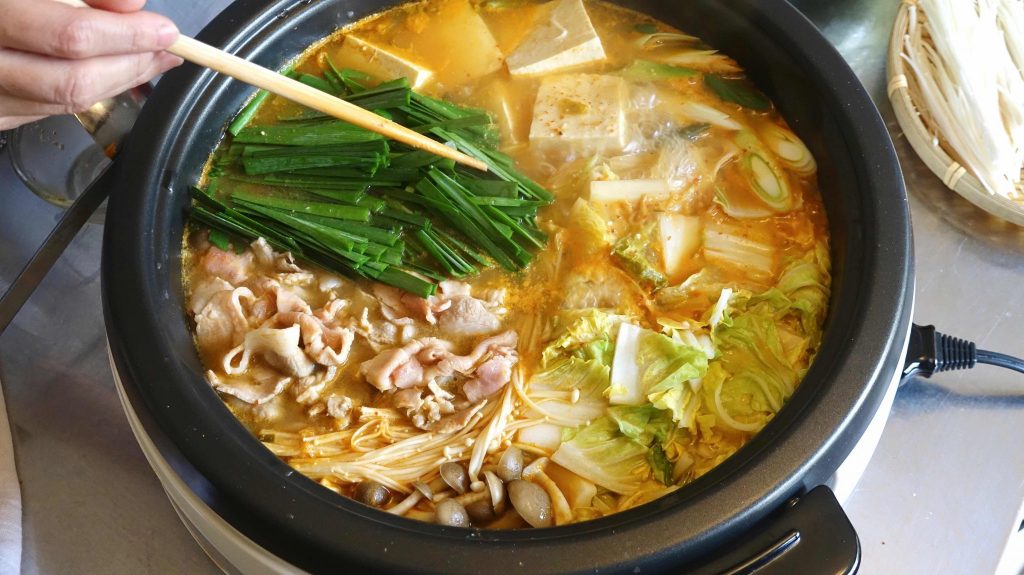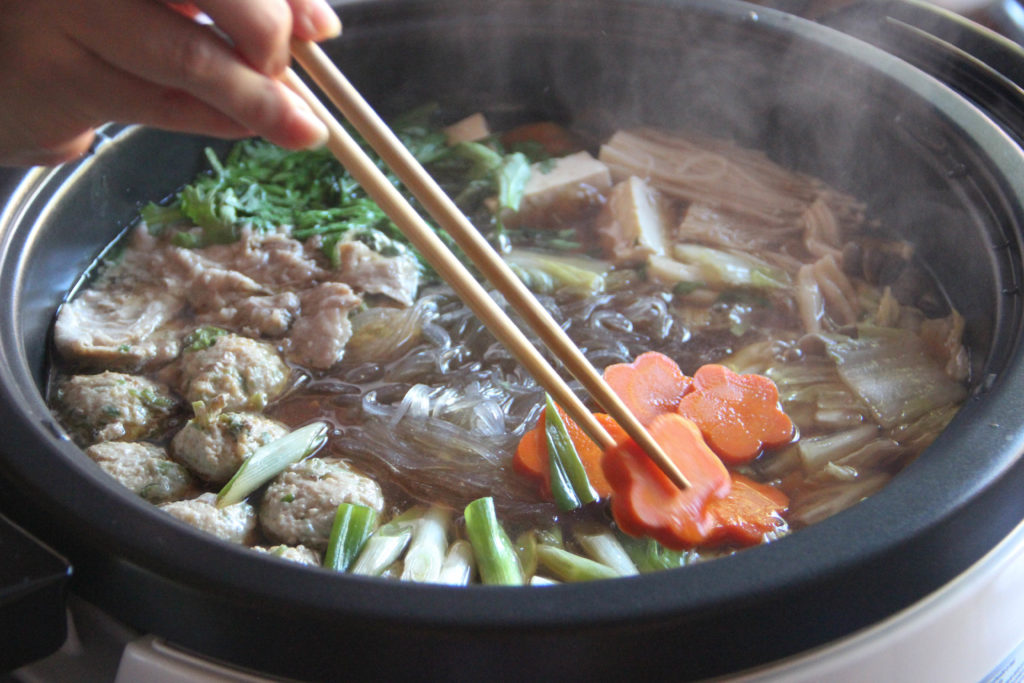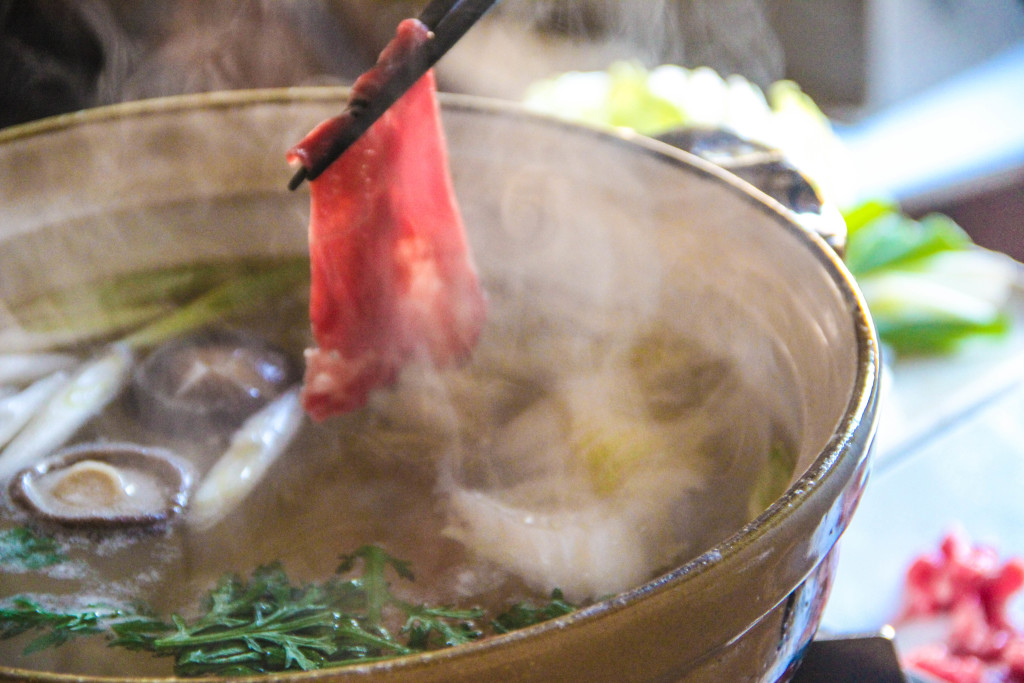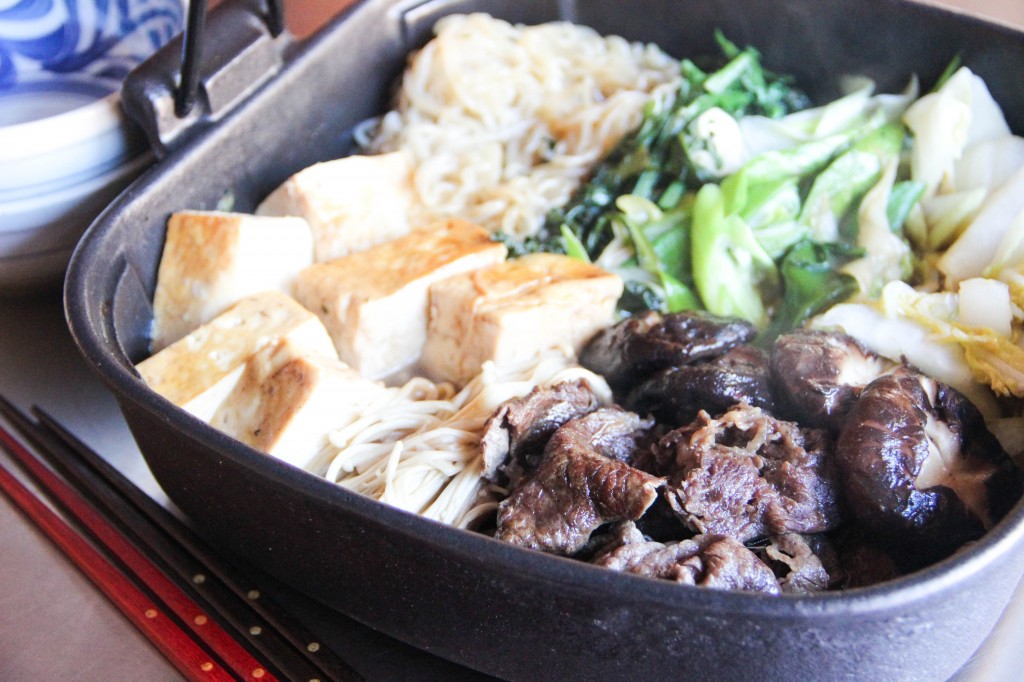Jyoya Nabe (常夜鍋) is a simple Japanese hot pot dish featuring tender spinach and paper-thin sliced pork in a clear Kombu sea kelp broth. While the broth itself is unseasoned, you dip the cooked ingredients in ponzu sauce for flavor. The name “Jyoya” means “every night,” suggesting this dish is good enough to eat for dinner every day. In fact, during the cold season, many Japanese households enjoy versions of this type of hot pot frequently, even if they don’t call it Jyoya Nabe.
Pork Shabu Shabu is a Japanese hot pot dish with thinly sliced pork and vegetables. Meat and vegetables are cooked in a simple Kombu broth and dipped and eaten with Ponzu Sauce. Pork Shabu Shabu is an easy but wonderful dinner when coming back home from the chilly outside.
Shabu Shabu usually indicates a Japanese hot pot dish (all hot pot dishes are called “Nabemono” or ”Nabe”) with paper-thin sliced beef. But here it is with thinly sliced pork in place of beef. Instead of packing the pot with all the ingredients like Mizutaki, leave some room in the pot so that you can easily dip your thin meat in hot broth and swirl them around to cook. It should be cooked at the dinner table using a portable gas stove and eaten as we cook, the same as other Nabemono.
Kaki Dotenabe is a hot pot dish with Oysters and vegetables in a strong Miso based soup. Kaki Dotenabe is a Hiroshima regional dish, an area famous for oysters. It is often eaten in winter as other hot pots are, and that’s also when oysters are in season. The distinguished “Umami” savory flavor from oysters is blended into the Miso based soup, and it is eaten as is, without any dipping sauces like many other hot pots require. You can of course enjoy the main ingredient of oysters in the pot, but also the side ingredients Napa cabbage and Tofu absorb a wonderful shellfish taste.
Kimchi Nabe (キムチ鍋) is a hot pot dish popular in winter in Japan. That’s right, it is Kimchi in Nabe just like the Korean hot pot dish, Kimch Jjigae. Kimchi Nabe has been popular in Japan for a long time, and evolved as their own version of Kimch Jjigae. It is mildly spicy, but it is hot temperature-wise of course, making it a great family dinner on a cold winter night.
Chanko Nabe is a very popular style of hot pot dish in Japan. A lot of vegetables and meat can be cooked in seasoned broth at the same time at the dinner table as you eat. It is an easy and great hot dish in winter time.
Shabu Shabu (しゃぶしゃぶ) is a Japanese hot pot dish, Nabemono, with paper-thin sliced beef. It is cooked at the dinner table using a portable gas stove and we eat it as we cook. There are a lot of Shabu Shabu speciality restaurants in Japan, but you can prepare it at home too. The single most important ingredient of the dish is beef. If you can get good quality meat, the rest is not hard at all.
Mizutaki (水炊き) is a kind of hot pot dish (called Nabemono or simply Nabe) in which fish or other kinds of meat and vegetables are cooked in unseasoned fish broth and dipped in tangy Ponzu sauce. It is cooked in a ceramic pot called Donabe, right at the dinner table using a portable gas stove and we eat it as we cook. It is somewhat similar to Sukiyaki. But Mizutaki is an even more perfect food for cold weather.
Sukiyaki is one of the most popular hot pot dishes in Japan. It has a sweet and salty flavor a little bit like teriyaki sauce, but with beef and vegetable in the mix, it has its own Sukiyaki taste people love so much. We usually cook Sukiyaki in a cast iron Sukiyaki pot at the dinner table using a portable gas stove and eat it as we cook. It is a perfect dinner for family or great food to enjoy with guests.
